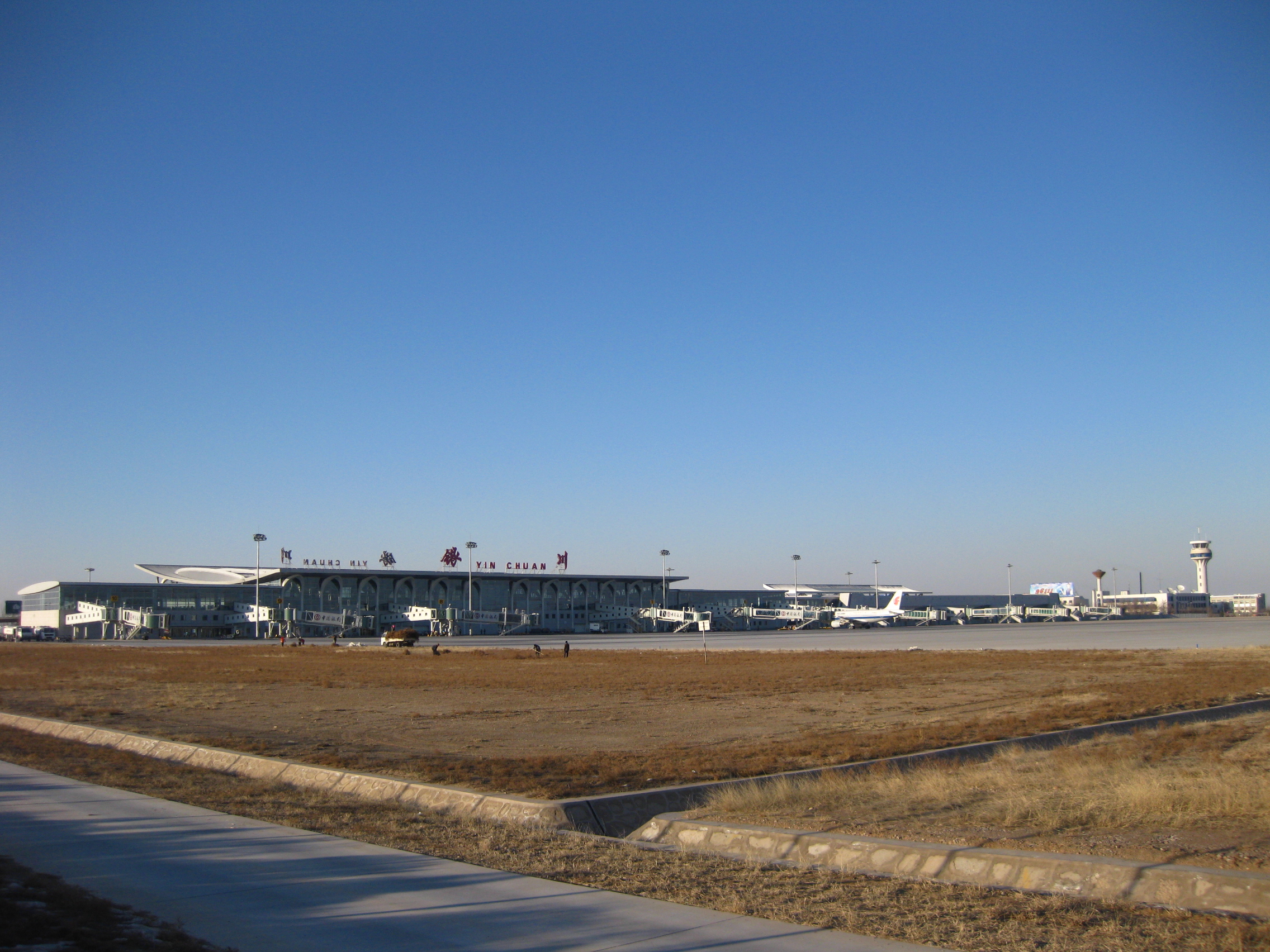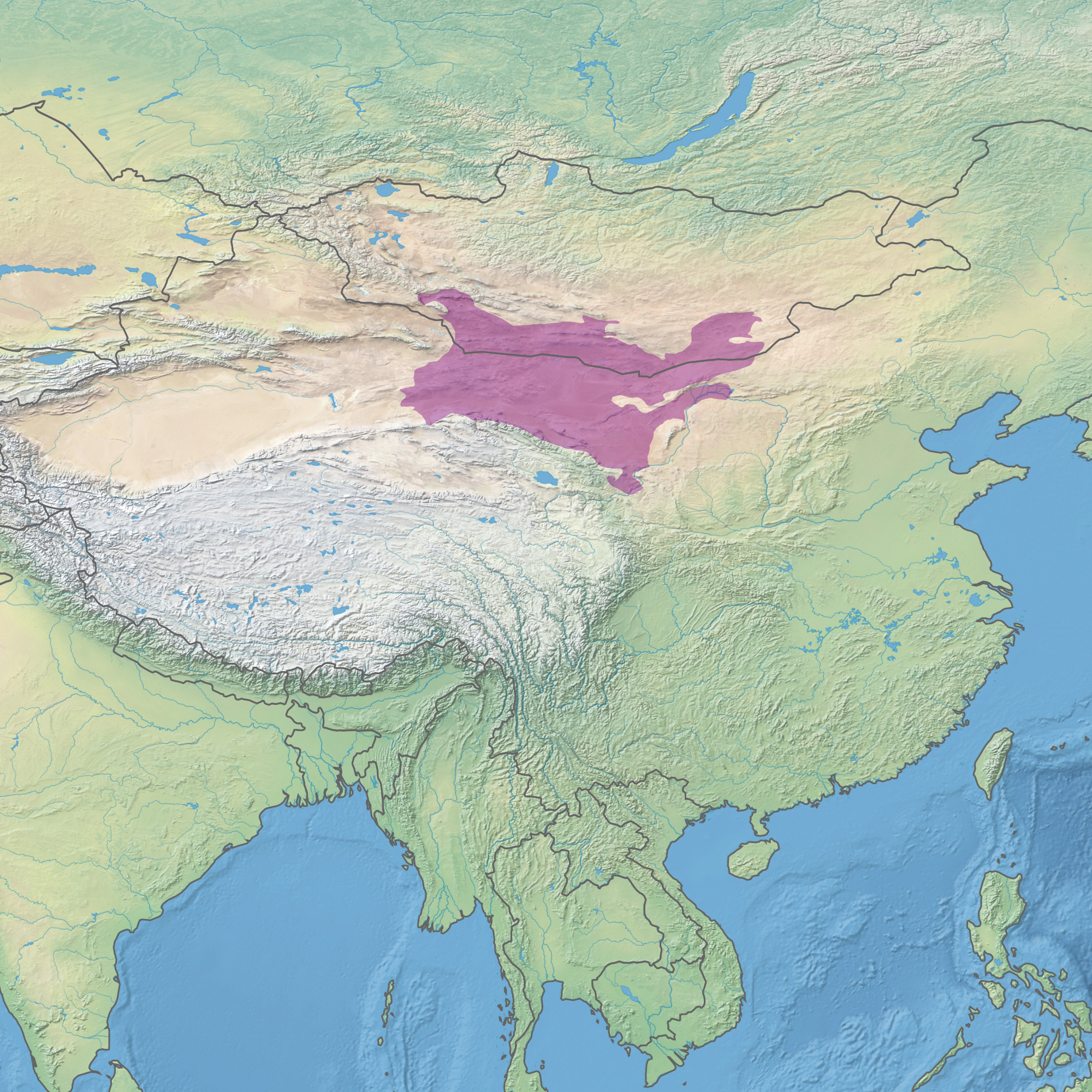|
Ningxia
Ningxia, officially the Ningxia Hui Autonomous Region, is an autonomous region in Northwestern China. Formerly a province, Ningxia was incorporated into Gansu in 1954 but was later separated from Gansu in 1958 and reconstituted as an autonomous region for the Hui people, one of the 56 officially recognised nationalities of China. Twenty percent of China's Hui population lives in Ningxia. Ningxia is bounded by Shaanxi to the east, Gansu to the south and west and Inner Mongolia Autonomous Region to the north and has an area of around . This sparsely settled, mostly desert region lies partially on the Loess Plateau and in the vast plain of the Yellow River and features the Great Wall of China along its northeastern boundary. Over about 2000 years, an extensive system of canals (with a total length of approximately 1397 kilometers) has been built from Qin dynasty. Extensive land reclamation and irrigation projects have made increased cultivation possible. The arid region of Xihaig ... [...More Info...] [...Related Items...] OR: [Wikipedia] [Google] [Baidu] |
Yinchuan
Yinchuan is the capital of the Ningxia, Ningxia Hui Autonomous Region, China, and was the capital of the Tangut people, Tangut-led Western Xia, Western Xia dynasty. It has an area of and a total population of 2,859,074 according to the 2020 Chinese census, and its built-up area was home to 2,564,918 inhabitants spread between three urban districts and Helan and Yongning counties largely being urbanized. The city's name literally means "silver river". Yinchuan is now the permanent site for the China-Arab Expo, a platform for cultural and economic exchanges between China and Arab world, Arab countries. The city is also home to Ningxia University, the largest regional comprehensive university under Ningxia's Project 211. History The area that is now Yinchuan was home to Shuidonggou, China's earliest paleolithic site. It dates from over 30,000 years ago, Later in History of China#Prehistory, Chinese prehistory, Rock Paintings of Helan Mountains, rock art was created in the Hela ... [...More Info...] [...Related Items...] OR: [Wikipedia] [Google] [Baidu] |
Chairperson Of Ningxia
The Chairperson of the Ningxia Hui Autonomous Region People's Government is the head of the Ningxia Hui Autonomous Region and leader of the People's Government of the Ningxia Hui Autonomous Region. The chairperson is elected by the People's Congress of the Ningxia Hui Autonomous Region, and responsible to it and its Standing Committee. The chairperson is a provincial level official and is responsible for the overall decision-making of the regional government. The chairperson is assisted by an executive vice chairperson as well as several vice chairpersons. The chairperson generally serves as the deputy secretary of the Ningxia Hui Autonomous Regional Committee of the Chinese Communist Party The Communist Party of China (CPC), also translated into English as Chinese Communist Party (CCP), is the founding and One-party state, sole ruling party of the People's Republic of China (PRC). Founded in 1921, the CCP emerged victorious in the ... and as a member of the CCP Central Com ... [...More Info...] [...Related Items...] OR: [Wikipedia] [Google] [Baidu] |
Hui People
The Hui people are an East Asian ethnoreligious group predominantly composed of Islam in China, Chinese-speaking adherents of Islam. They are distributed throughout China, mainly in the Northwest China, northwestern provinces and in the Zhongyuan region. According to the 2010 census, China is home to approximately 10.5 million Hui people. Outside China, the 170,000 Dungan people of Kazakhstan and Kyrgyzstan, the Panthays in Myanmar, and many of the Chin Haws in Thailand are also considered part of the Hui ethnicity. The Hui were referred to as Hanhui during the Qing dynasty to be distinguished from the Turkic peoples, Turkic Muslims, which were referred to as Chanhui. The Republic of China (1912–1949), Republic of China government also recognised the Hui as a branch of the Han Chinese rather than a separate ethnic group. In the National Assembly (Republic of China), National Assembly of the Republic of China, the Hui were referred to as 1947 Chinese National Assembly election ... [...More Info...] [...Related Items...] OR: [Wikipedia] [Google] [Baidu] |
Party Secretary Of Ningxia
The secretary of the Ningxia Hui Autonomous Regional Committee of the Chinese Communist Party is the leader of the Ningxia Hui Autonomous Regional Committee of the Chinese Communist Party (CCP). As the CCP is the sole ruling party of the People's Republic of China (PRC), the secretary is the highest ranking post in Ningxia. The secretary is officially appointed by the CCP Central Committee based on the recommendation of the CCP Organization Department, which is then approved by the Politburo and its Standing Committee. The secretary can be also appointed by a plenary meeting of the Ningxia Regional Committee, but the candidate must be the same as the one approved by the central government. The secretary leads the Standing Committee of the Ningxia Regional Committee, and is usually a member of the CCP Central Committee. The secretary leads the work of the Regional Committee and its Standing Committee. The secretary is outranks the chairperson The chair, also chairman, chairwom ... [...More Info...] [...Related Items...] OR: [Wikipedia] [Google] [Baidu] |
Autonomous Regions Of China
The autonomous regions ( zh, s=自治区, p=Zìzhìqū) are one of four types of province-level divisions of China, province-level divisions of the People's Republic of China. Like provinces of China, Chinese provinces, an autonomous region has its own local government, but under the law of the People's Republic of China, an autonomous region has more legislative rights, such as the right to "formulate self-government regulations and other separate regulations." An autonomous region is the highest level of Autonomous administrative divisions of China, minority autonomous entity in China, which has a comparably higher population of a particular minority ethnic group. There are five autonomous regions in China: Guangxi, Inner Mongolia, Inner Mongolia (Nei Menggu), Ningxia, Tibet Autonomous Region, Tibet (Xizang), and Xinjiang. History Established in 1947, the Inner Mongolia, Inner Mongolia Autonomous Region became the first autonomous region in the Communist-controlled China ... [...More Info...] [...Related Items...] OR: [Wikipedia] [Google] [Baidu] |
Zhang Yupu
Zhang Yupu (; born August 1962) is a Chinese politician who is the current chairman (governor) of the Ningxia Hui Autonomous Region, in office since May 2022. He was a delegate to the 12th National People's Congress and is a delegate to the 13th National People's Congress. Early life and education Zhang was born in Jinan, Shandong, in August 1962. After resuming the college entrance examination, in 1980, he entered Northeast Agricultural College (now Northeast Agricultural University), where he majored in agricultural mechanization. Career in Heilongjiang Zhang joined the Chinese Communist Party (CCP) in July 1984. After graduation in 1984, he was assigned to the Lanxi County Agricultural Machinery Repair and Manufacturing Factory in Heilongjiang, he served in several posts in the factory, including technician, deputy director of the office, and deputy factory director. He was an engineer and director of the office of Hulan County Automobile Repair Factory between August 1 ... [...More Info...] [...Related Items...] OR: [Wikipedia] [Google] [Baidu] |
Western Xia
The Western Xia or the Xi Xia ( zh, c=, w=Hsi1 Hsia4, p=Xī Xià), officially the Great Xia ( zh, c=大夏, w=Ta4 Hsia4, p=Dà Xià, labels=no), also known as the Tangut Empire, and known as Stein (1972), pp. 70–71. to the Tanguts and Tibetans, was a Tangut-led imperial dynasty of China that existed from 1038 to 1227. At its peak, the dynasty ruled over modern-day northwestern China, including parts of Ningxia, Gansu, eastern Qinghai, northern Shaanxi, northeastern Xinjiang, and southwest Inner Mongolia, and southernmost Outer Mongolia, measuring about . The capital of Western Xia was Xingqing (modern Yinchuan); another major Xia city and archaeological site is Khara-Khoto. Western Xia was annihilated by the Mongols in 1227. Most of its written records and architecture were destroyed, so the founders and history of the empire remained obscure until 20th-century research in China and the West. Today the Tangut language and its unique script are extinct, only ... [...More Info...] [...Related Items...] OR: [Wikipedia] [Google] [Baidu] |
Shapotou District
Shapotou District (, Xiao'erjing: ) is a district of Zhongwei, Ningxia, China, noted for the Tengger Desert, and bordering Inner Mongolia to the north and Gansu province to the west. It is the site of the Shapotou Desert Experimental Research Station. The research station is located at the southern end of the dune sea on the banks of the Yellow River The Yellow River, also known as Huanghe, is the second-longest river in China and the List of rivers by length, sixth-longest river system on Earth, with an estimated length of and a Drainage basin, watershed of . Beginning in the Bayan H .... Research at station includes dune stabilization using grasses and microbial mats. Regions stabilized in the 1950s are now used for fruit and vine crops. Sand dune stabilization in the region is required to curtail burial of the trans-Asia Baotou–Lanzhou Railway. Administrative divisions At present, Shapotou District, has 10 towns and 1 township. ;10 towns * Binhe (, ) * Wenchan ... [...More Info...] [...Related Items...] OR: [Wikipedia] [Google] [Baidu] |
Yellow River
The Yellow River, also known as Huanghe, is the second-longest river in China and the List of rivers by length, sixth-longest river system on Earth, with an estimated length of and a Drainage basin, watershed of . Beginning in the Bayan Har Mountains, the river flows generally eastwards before entering the long Ordos Loop, which runs northeast at Gansu through the Ordos Plateau and turns east in Inner Mongolia. The river then turns sharply southwards to form the border between Shanxi and Shaanxi, turns eastwards at its confluence with the Wei River, and flows across the North China Plain before emptying into the Bohai Sea. The river is named for the yellow color of its water, which comes from the large amount of sediment discharged into the water as the river flows through the Loess Plateau. The Yellow River basin was the birthplace of Yellow River civilization, ancient Chinese civilization. According to traditional Chinese historiography, the Xia dynasty originated on it ... [...More Info...] [...Related Items...] OR: [Wikipedia] [Google] [Baidu] |
Helan Mountains
The Helan Mountains, frequently called Alashan Mountains in older sources, are an isolated desert mountain range forming the border of Inner Mongolia's Alxa League and Ningxia. They run north-south parallel to the north-flowing Yellow River in the Ordos Loop section. The river is mostly east of the mountains, but in the north it crosses without making a significant gorge and flows on the west side. To the west lies the extremely arid Tengger Desert, while to the east is an irrigated area beside the Yellow River, in which lie the cities of Yinchuan and Shizuishan - a little further east of which lies the Mu Us portion of the Ordos Desert. To the north lies the Inner Mongolian city of Wuhai. They are about from north to south, from wide and average about in altitude (the Yellow River here is about above sea level). Their highest peak is . Emerging wine industry With the increasing popularity of Ningxia wines, the Chinese authorities have given approval to the developmen ... [...More Info...] [...Related Items...] OR: [Wikipedia] [Google] [Baidu] |
Li Yifei
Li Yifei (born January 1964) is a Chinese politician who is the current Party Secretary of Ningxia, in office since June 2024. He previously served as political commissar and party secretary of Xinjiang Production and Construction Corps (XPCC). He was a representative of the 19th National Congress of the Chinese Communist Party. He is a member of the 20th Central Committee of the Chinese Communist Party. Early life and education Li was born in Mojiang County, Yunnan, in January 1964. In 1980, he enrolled in Kunming Medical University, majoring in hygiene, after graduating in 1985, he worked at the university. He also earned his Master of Public Administration degree from Tsinghua University in 2008. Career in Yunnan He got involved in politics in June 1986, when he was appointed as an official in the Yunnan Provincial Labor and Personnel Department and then to Yunnan Provincial Economic and Trade Commission in November 1998. In November 2001, he was made deputy director of ... [...More Info...] [...Related Items...] OR: [Wikipedia] [Google] [Baidu] |
List Of Chinese Provincial-level Divisions By GDP Per Capita
The article is about China's first-level administrative divisions by their gross domestic product per capita in main years. All figures are given in the national currency, renminbi (CNY) and in USD at nominal values. Purchasing power parity index changes frequently, and its relevant data is not included in the main table, only included at the end of the entry. Purchasing power parity reference comes from the World Economic Outlook published by the International Monetary Fund (IMF). The average CNY exchange rate used here is from China NBS, and CNY PPP exchange rates are estimated according to the IMF. Unless otherwise specified, the GDP per capita here is based on the annual average population. The annual average population or mid-year population is the average of the resident population at the end of the two consecutive years. Since the implementation of reform and opening up in mainland China in 1978, its economy has developed rapidly. In 1995, the GDP per capita of Bei ... [...More Info...] [...Related Items...] OR: [Wikipedia] [Google] [Baidu] |





